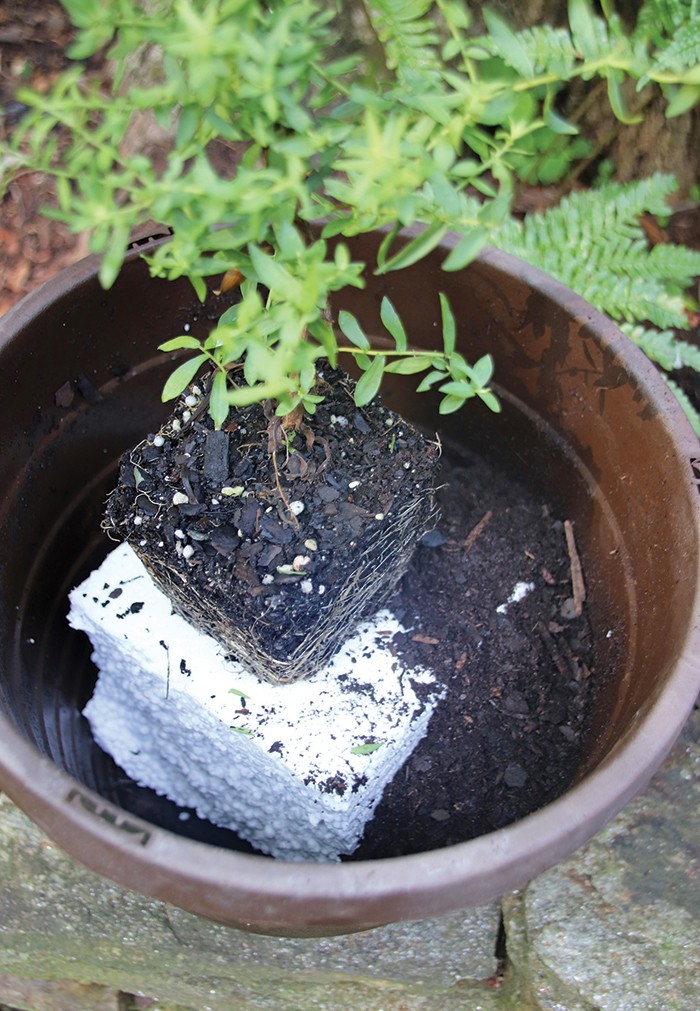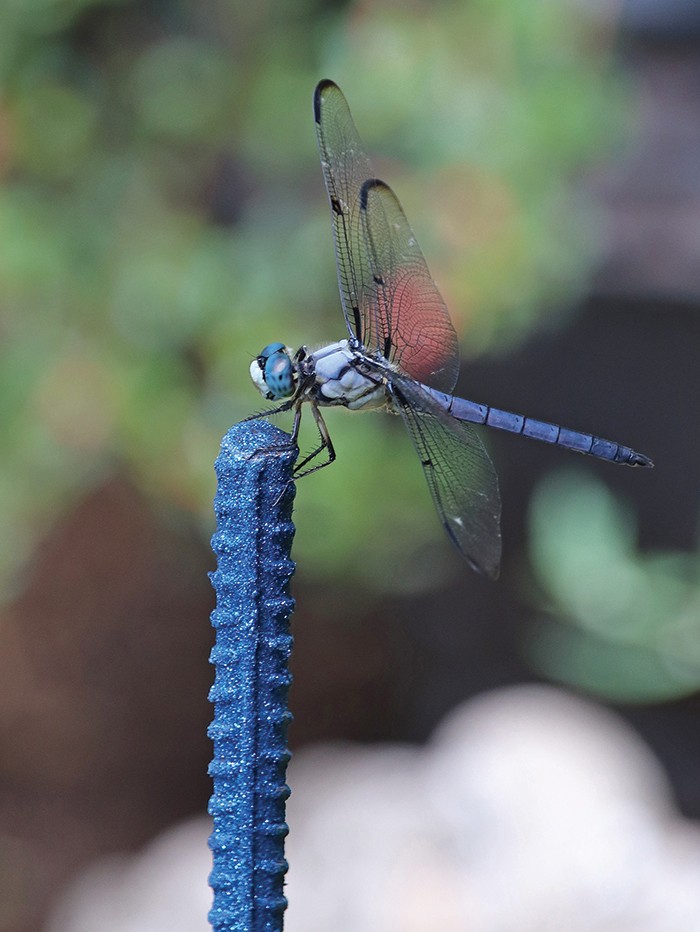Have you ever noticed how dragonflies seem to become one with the tippy-tops of car antennas during the summer? Sure, not every auto aerial finds a dragonfly fully parked, but it happens quite often.
Why dragonflies pick such perches varies between love and war. One school of thought is that the peak of an auto antenna is the perfect perch to see and be seen during mating season. It has also been reasoned that dragonflies use these high, unobstructed roosts to watch for prey.
And dragonflies are efficient killers. In particular, they search the skies for mosquitoes and nasty little flying midges known as no-see-ums — both of which find gardeners delicious.
To encourage frequent visits by these beneficial assassins on the wing, I decided to make my growing grounds dragonfly friendly. I already had a pond garden as a source of water they need to lay eggs in order to complete their life cycle, but not wanting to park my truck in between tomato rows, I had to figure out an antenna alternative.
I settled on rebar (builder speak for “reinforcement bar”) for a few reasons. First, it is tall, slim and made of metal, just like an auto antenna. Second, I had a few rusty six-foot pieces clanging around in my garden shed, and to keep from continually wondering when my next tetanus shot was due, this experiment was an excuse for their eviction. Finally, rebar is tough — it’s difficult to bend, and, while rust might settle on the outside, it has a harder time eating through the carbon steel.
I gave those ol’ raggedy scraps the Cinderella treatment with a good cleaning followed by jazzing them up in bright metallic flake paint. Scattered in sunny areas across my garden, the glittery poles were pounded about 18 inches into the ground, meaning, in this region’s thick clay, they weren’t going anywhere.
Dragonflies came. It wasn’t a constant fly-in, mind you, but seeing them frequently enthroned on top of the recycled rebar spikes gave me the satisfaction I was making mosquitoes and no-see-ums nervous, and as a bonus, I was bringing additional kinetic color into my garden, compliments of these pretty predators.
Skinny wooden sticks will probably also work, but the heavy metal of rebar makes for a more persistent presence in the garden, especially if you want them to do double duty as trellis posts, vertical supports for tall, floppy perennials, or plant guards in areas frequently snaked by long, clunky water hoses.

Make your patio planters lighter by hiding a bit of Styrofoam under the potting soil.
While filling patio pots, window boxes and hanging baskets with summer ornamentals, stretch your supply of commercial potting soil and lighten up containers at the same time with Styrofoam.
Yep, when used in planters, those useless pieces of lightweight product padding can take up space and take away weight. However, whether you opt for Styrofoam peanuts or broken pieces of molded chunks, for pots up to 18 inches in diameter and about one foot tall or less, try not to fill in more than a third of the containers’ volume. This leaves plenty of room for growing medium, so the roots of annual pretties can stretch out and thrive.
To Do in the Garden
June
- Garden-grown cukes starting to taste bitter? It is probably due to stress from dry conditions. For the best flavor, keep cucumber plants hydrated by mulching to conserve soil moisture and providing water on a regular basis if the rains don’t come.
- Any trees, shrubs or perennials that were planted in late winter or early this spring have root systems that are still developing, meaning they are trying to keep up with the summer demands of leafed-out plants, so be sure to thoroughly water such new plantings weekly during times of extended arid spells.
- Wash and refill the birdbath at least once a week, as it will probably be getting plenty of use from your feathered garden friends.
- If summer showers soak the bird feeder, clean out the wet seed before it becomes spoiled and moldy.
July
- If brown patches start to appear on your lawn this summer, don’t automatically blame drought. Use a shovel to turn over the top few inches of soil in an afflicted area. See any fat, white “worms?” These are actually insect grubs that spend their dark days underground munching on grass roots.
- Watering the garden early in the morning will allow leaves to dry out quickly, lessening the chances of many foliar diseases getting a grip on plants.
- Keep roses looking pretty as well as healthy by pruning any spent flowers as well as dead or diseased branches and leaves every week to ten days.
- It Pays to Play!
- Price of Popularity
- Small Business Spotlight: Code Ninjas
- Garden Adventurer: Attracting Dragons
- Main Squeeze
- Liquid Assets: One Mile Round from Southern Peak Brewery
- Liquid Assets: Coconut Carolina Rum from Muddy River Distillery
- Pack the Perfect Picnic
- Meet the 2019 Movers & Shakers
- The Hive: Fun for West Cary Residents
- From The Editor: June/July 2019







